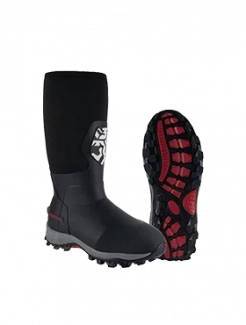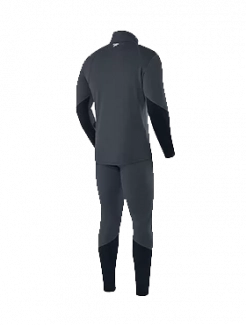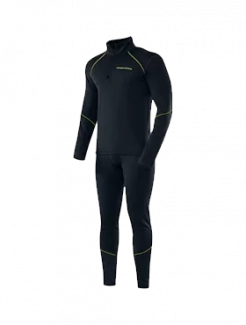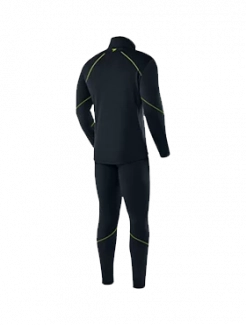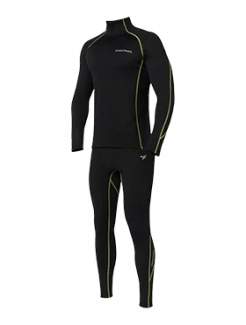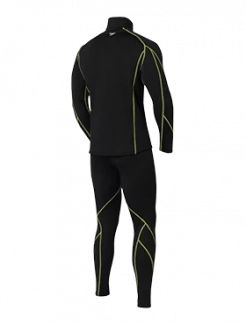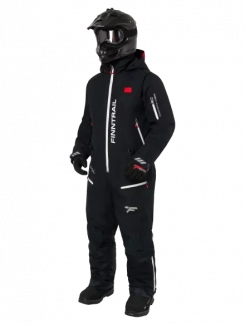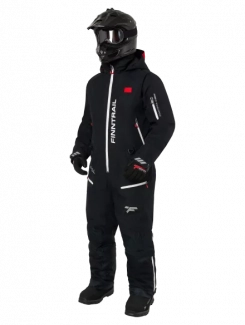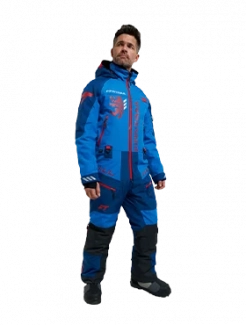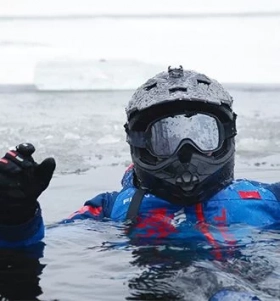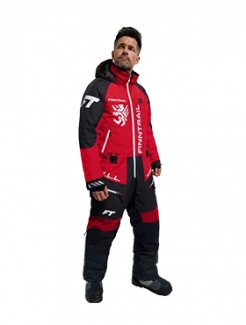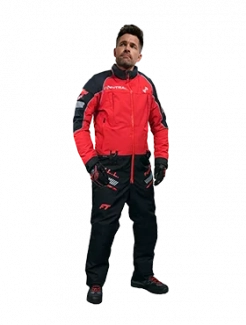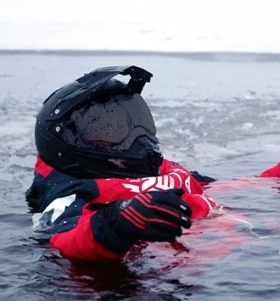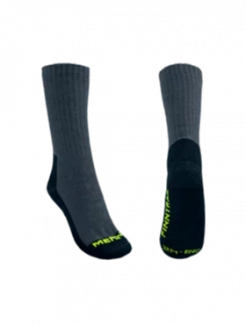The Angler’s Guide to Using Tip-Ups on Ice
Have you ever thought that when you use tip-ups, the chances of catching fish are two to three times higher? This tool lets you take the best from the winter hobby and enjoy the process.
Many experienced anglers love having ice fishing tip-ups because of their reliability and efficiency. It is not only a time-tested method for catching big species like pike, walleye, and lake trout, but it also prevents you from bringing many unnecessary fishing rods and drilling many holes all over the lake or river. If you have a nice ice fishing tip-up, it will reward you with many pleasant hours spent on ice. Once you learn how to set it up, you can open a new chapter of your winter fishing journey.
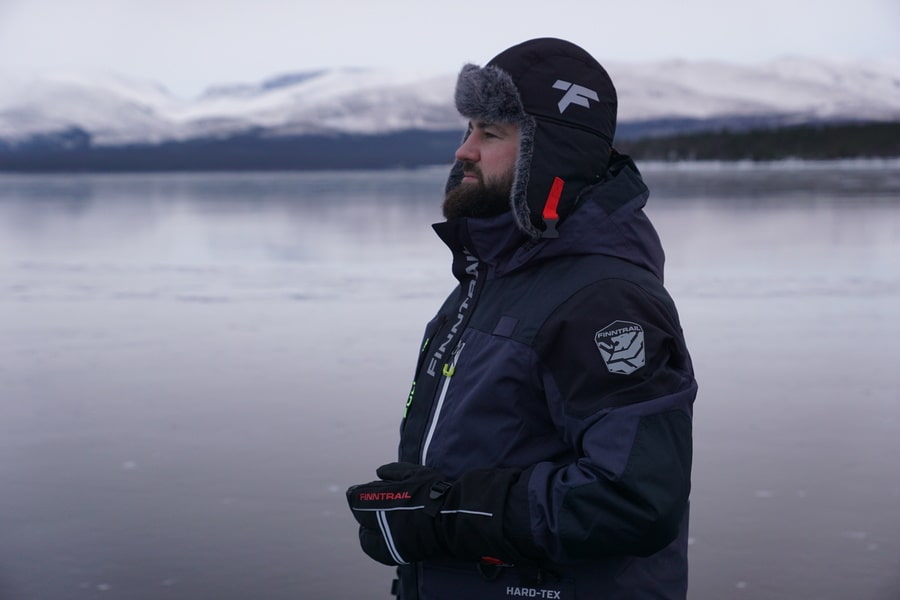
What is a tip-up?
Tip-up ice fishing is significantly different from what older-schooled fishermen dealt with before. Fishing with tip-ups does not assume sitting on a plastic folding chair around one hole and holding a fishing rod, waiting for a bite. On the contrary, angles can use several lines for one hole and wait for a signal to strike, making it perfect for catching finicky fish.
The design of the tip-ups is usually simple and includes a wooden frame that is made like a cross and set above the ice hole, and ice fishing tip-up rigs, which consist of a spool with line and a bright flag that pops up when a fish pulls the line. When it happens, the angler walks over the hole, assesses the situation, and manually brings in the fish by handlining.
Choosing the right tip-up
There are several types of tip-ups, and each one works better in specific conditions. When you understand the differences between them, you can avoid many problems like frozen holes or false flags.
-
Classic cross-style tip-up. This is the most traditional design of tip-ups. It is often made from a wooden or plastic ice fishing tip-up rod holder, which is a simple cross-shaped frame that is set over the hole. It is great for beginners because it is both easy to set up and affordable. This type works well in most conditions but may need more attention in strong wind or extreme cold because it might not be that durable under the harsh conditions..
-
Thermal tip-up. Shaped like a flat, round disc, a thermal tip-up covers the entire hole. It definitely helps prevent the hole from freezing and blocks light from entering the water. This is a smart option for fishing in very cold weather or when someone prefers staying out for long hours without constant hole-checking. So, if you enjoy lazy fishing, this is the best option for you.
-
Windless tip-up. This type uses a special balanced system that does not move unless a fish bites, which helps avoid flags from moving on windy days. Many experienced anglers prefer this option when they go fishing on open lakes as it might be windy there. A good recommendation here is to remember that setting the windless tip-ups on the spot takes more time because they are very sensitive to motion.
-
Rail or flat-board tip-up. These have a long, flat base and are designed for maximum stability. They work well in deep snow or when setting up over uneven ice. Many models include features that make them reliable in harsh conditions. They are a good all-around choice for serious anglers.
How to use tip-up for ice fishing?
1. Preparing your tip-up and line.
Setting up begins at home or at the truck before loading to the lake or river. The main rule here is that a tip-up spool should be filled with braided Dacron or other ice-friendly tip-up line, which can typically be rated around 20–50 lb test. Dacron holds up well in freezing conditions and is easy to grip while handlining.
Once you choose the line for tip-ups, you have to attach a leader to prevent the line from being bitten or damaged by fish or other underwater obstacles. It is usually made of stronger materials than the main line and situated between the hook and the float. It is not necessary to use, though, if you aim to catch small fish or fish in the water entity without debris or snags.
And the final tackle often includes a quick-strike rig and a hook. The main rule here is that if you intend to catch a big and fast fish like pike or trout, then it is better to use a triple hook that gives you a fast hookset. On the other hand, if you do not need an aggressive hookset and have plans for walleye or catfish, then a simple circle hook is more than enough.
The next step is setting a bait or lure. The choice depends on the target species, water clarity, depth, and how active the fish are that day. Some days, natural bait works better. Other times, fish respond more to movement and color. It is a good idea to bring a mix of live bait and lures to see what gets the most bites. And remember, that if you bring the first ones, keep them in cool, oxygen-rich water with good ventilation. Otherwise, they will not stay healthy and swim naturally under the water, and, as a result, will not be that attractive to bigger fish.
Besides baitfish, many anglers also use artificial lures when fishing through the ice. Some common options include:
-
Jigs. Small weighted hooks, sometimes tipped with a waxworm or soft plastic, used with light twitching movements.
-
Jigging spoons. Metal lures that flash and flutter when dropped and lifted, mimicking a wounded baitfish.
-
Balance lures. Hard baits that dart in wide circles under the ice, great for attracting fish in deeper water.
-
Soft plastics. Rubber-like lures that look like bugs, minnows, or worms, often used with a small jighead.
Finally, after you finish building an ice fishing tip-up, it is helpful to use a depth finder or sounder weight to determine bottom depth, then set the bait to hover at the right level which is often just a foot or two above the bottom or near a known weed edge.
2. Drilling holes and planning layout.
The strategic placement of holes often separates the successful experience from the frustrated one. It is not just about spacing tip-ups evenly, it is about reading the water beneath the ice. Target points, drop-offs, shallow flats, or submerged vegetation. A handheld GPS or mapping app with lake contour charts can make a big difference.
Most anglers drill their holes in a grid or semi-circle to cover a range of depths and structures. On clear ice, spacing holes 15–20 feet apart helps avoid tangles while keeping an eye on all flags. On snow-covered lakes, reflective tape or marker sticks may be helpful to avoid losing sight of tip-ups.
Local laws often limit how many ice fishing tip-up lines can be used per person, so be sure to check regulations before spreading a dozen rigs across the ice.
3. Setting the tip-up: step by step
1. After you finish drilling a hole, clear the slush, and lower the bait to the desired depth. Set the spool in place underwater, so it does not freeze.
2. Attach the flag’s trigger mechanism to the spool arm or trip bar according to the design and adjust the tension depending on current and bait size.
3. The flag should remain taut and ready to spring. Some anglers lightly pack snow around the base to stabilize the frame or use hole covers to prevent ice buildup. In extreme cold, checking each tip-up every 30–45 minutes helps keep moving parts from freezing.
4.Setting up should be silent and deliberate. Excess noise on the ice, like stomping or banging equipment, can spook fish, especially in shallow water.
4. Monitoring Flags and Landing Fish
Once you learn how to set a tip-up, a game of attention begins. A flag straight up means the trigger has tripped, but, unfortunately, it does not always mean the fish is still on. It is important to approach quietly, kneel by the hole, and observe the spool. If the line is spinning, the fish is moving.
Some anglers allow the fish to take a bit of line before setting the hook, while others prefer a quicker reaction to avoid deep-hooking. With a firm but smooth motion, the angler pulls the line by hand, keeping tension steady to guide the fish in.
Gloves should be non-slip and not too bulky, as handling wet lines in freezing air can be difficult. Once the fish is near the hole, it is gently pulled through and unhooked. Many anglers choose to release large specimens, especially breeders or trophy-class fish.
Safety, Maintenance, and Local Regulations
-
If you desire to know how to use ice fishing tip-ups effectively, then, the most essential thing here is to know about safety measures. The ice thickness must be more than 4 inches (10 cm), so it can bear a weight of one person. But if you are driving a car or a snowmobile, then wait till the ice thickness reaches 8-12 inches (20-30 cm) or more. You can also use a spud bar or a drill for making holes and checking the thickness. If there is moving water beneath the ice surface, it makes ice thinner, be sure to keep it in mind.
-
Once you are done fishing, do not just leave the tip-ups in your trunk or garage. If you do so, the metal parts may rust, while the wooden parts can be covered with mold over time. Some cheap ice fishing tip-ups can easily get damaged when stored inappropriately. So, clean the equipment and store it in a dry safe place till your next time out.
-
Learn about the local rules before going out for fishing. There are some regions that require each tip-up to be clearly marked with the angler’s name, license number, or phone number. Additionally, some areas limit how many lines you can use or how far away you are allowed to be from your gear. If you are using several tip-ups at once, try to keep them within view so you can react quickly and stay within the law.
Final Thoughts
Summing up, the best ice fishing tip-up experience is not about the passive expectation of your flag to fly. It requires preparation, strategy and patience during your time on the ice. It has many intricacies and requires observation and experience.
Also, the tip up setup might look simple, but it is deceptive. Small details play a big role and if you choose the holes’ location wrongly or neglect the regular check of your baits, then it can ruin your entire day on the ice.
And the last piece of advice here is that success on the ice does not always depend on high-end equipment. For many anglers, cheap ice fishing tip-ups or even homemade ice fishing tip-ups provide a reliable way to get started or to cover more holes without overspending. What matters here is your patience and your desire to learn more about the underwater world.

